Jingwu He
Adaptive Fusion Affinity Graph with Noise-free Online Low-rank Representation for Natural Image Segmentation
Oct 22, 2021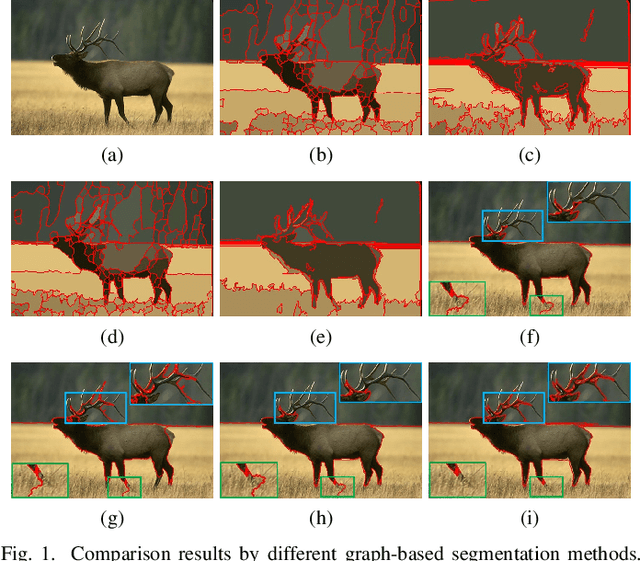
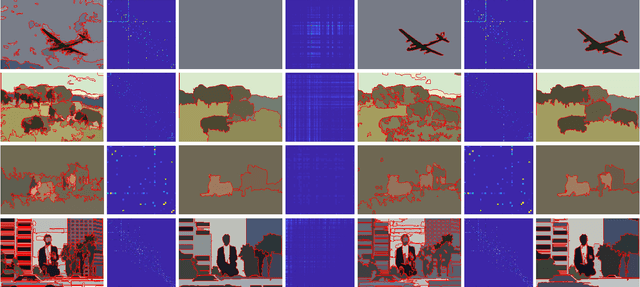
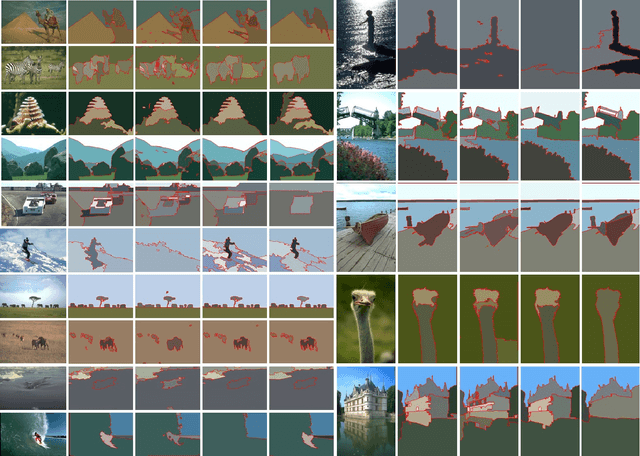
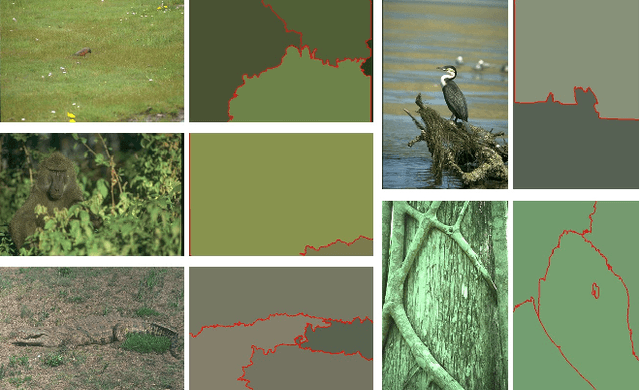
Abstract:Affinity graph-based segmentation methods have become a major trend in computer vision. The performance of these methods relies on the constructed affinity graph, with particular emphasis on the neighborhood topology and pairwise affinities among superpixels. Due to the advantages of assimilating different graphs, a multi-scale fusion graph has a better performance than a single graph with single-scale. However, these methods ignore the noise from images which influences the accuracy of pairwise similarities. Multi-scale combinatorial grouping and graph fusion also generate a higher computational complexity. In this paper, we propose an adaptive fusion affinity graph (AFA-graph) with noise-free low-rank representation in an online manner for natural image segmentation. An input image is first over-segmented into superpixels at different scales and then filtered by the proposed improved kernel density estimation method. Moreover, we select global nodes of these superpixels on the basis of their subspace-preserving presentation, which reveals the feature distribution of superpixels exactly. To reduce time complexity while improving performance, a sparse representation of global nodes based on noise-free online low-rank representation is used to obtain a global graph at each scale. The global graph is finally used to update a local graph which is built upon all superpixels at each scale. Experimental results on the BSD300, BSD500, MSRC, SBD, and PASCAL VOC show the effectiveness of AFA-graph in comparison with state-of-the-art approaches.
Affinity Fusion Graph-based Framework for Natural Image Segmentation
Jun 27, 2020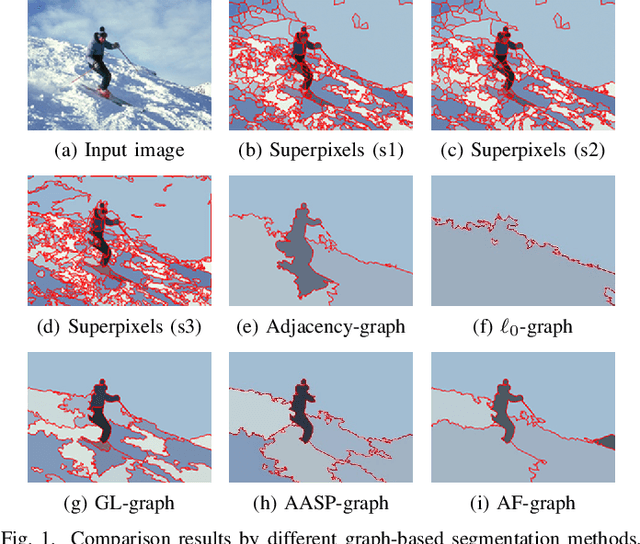
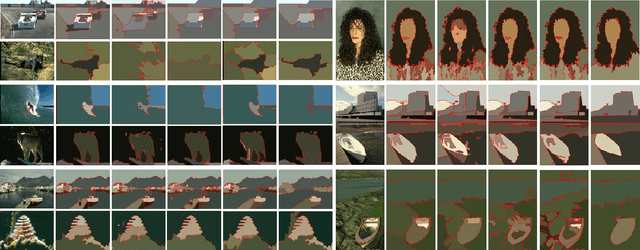
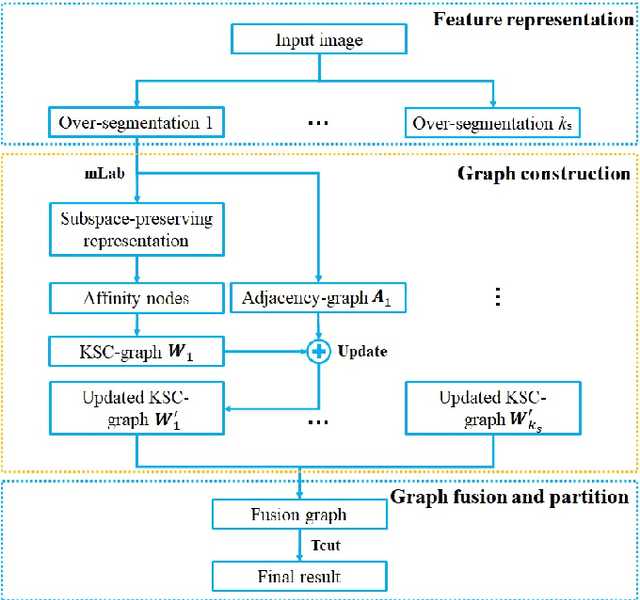
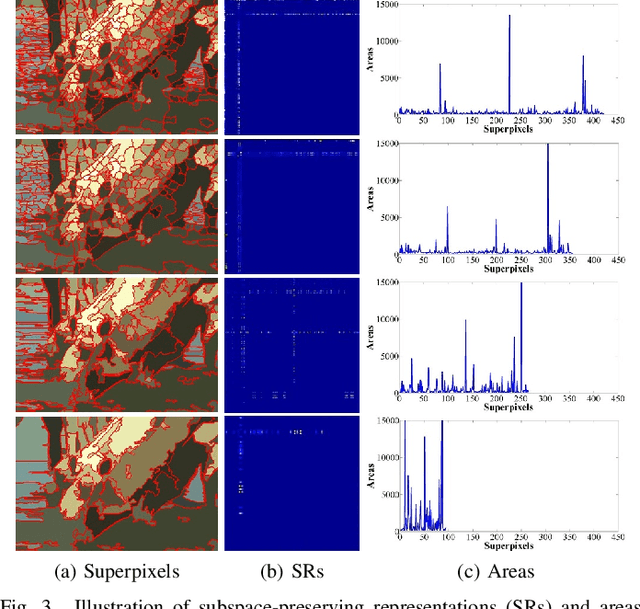
Abstract:This paper proposes an affinity fusion graph framework to effectively connect different graphs with highly discriminating power and nonlinearity for natural image segmentation. The proposed framework combines adjacency-graphs and kernel spectral clustering based graphs (KSC-graphs) according to a new definition named affinity nodes of multi-scale superpixels. These affinity nodes are selected based on a better affiliation of superpixels, namely subspace-preserving representation which is generated by sparse subspace clustering based on subspace pursuit. Then a KSC-graph is built via a novel kernel spectral clustering to explore the nonlinear relationships among these affinity nodes. Moreover, an adjacency-graph at each scale is constructed, which is further used to update the proposed KSC-graph at affinity nodes. The fusion graph is built across different scales, and it is partitioned to obtain final segmentation result. Experimental results on the Berkeley segmentation dataset and Microsoft Research Cambridge dataset show the superiority of our framework in comparison with the state-of-the-art methods. The code is available at https://github.com/Yangzhangcst/AF-graph.
FA-GANs: Facial Attractiveness Enhancement with Generative Adversarial Networks on Frontal Faces
Jun 06, 2020



Abstract:Facial attractiveness enhancement has been an interesting application in Computer Vision and Graphics over these years. It aims to generate a more attractive face via manipulations on image and geometry structure while preserving face identity. In this paper, we propose the first Generative Adversarial Networks (GANs) for enhancing facial attractiveness in both geometry and appearance aspects, which we call "FA-GANs". FA-GANs contain two branches and enhance facial attractiveness in two perspectives: facial geometry and facial appearance. Each branch consists of individual GANs with the appearance branch adjusting the facial image and the geometry branch adjusting the facial landmarks in appearance and geometry aspects, respectively. Unlike the traditional facial manipulations learning from paired faces, which are infeasible to collect before and after enhancement of the same individual, we achieve this by learning the features of attractiveness faces through unsupervised adversarial learning. The proposed FA-GANs are able to extract attractiveness features and impose them on the enhancement results. To better enhance faces, both the geometry and appearance networks are considered to refine the facial attractiveness by adjusting the geometry layout of faces and the appearance of faces independently. To the best of our knowledge, we are the first to enhance the facial attractiveness with GANs in both geometry and appearance aspects. The experimental results suggest that our FA-GANs can generate compelling perceptual results in both geometry structure and facial appearance and outperform current state-of-the-art methods.
Viewpoint Selection for Photographing Architectures
Mar 06, 2017



Abstract:This paper studies the problem of how to choose good viewpoints for taking photographs of architectures. We achieve this by learning from professional photographs of world famous landmarks that are available on the Internet. Unlike previous efforts devoted to photo quality assessment which mainly rely on 2D image features, we show in this paper combining 2D image features extracted from images with 3D geometric features computed on the 3D models can result in more reliable evaluation of viewpoint quality. Specifically, we collect a set of photographs for each of 15 world famous architectures as well as their 3D models from the Internet. Viewpoint recovery for images is carried out through an image-model registration process, after which a newly proposed viewpoint clustering strategy is exploited to validate users' viewpoint preferences when photographing landmarks. Finally, we extract a number of 2D and 3D features for each image based on multiple visual and geometric cues and perform viewpoint recommendation by learning from both 2D and 3D features using a specifically designed SVM-2K multi-view learner, achieving superior performance over using solely 2D or 3D features. We show the effectiveness of the proposed approach through extensive experiments. The experiments also demonstrate that our system can be used to recommend viewpoints for rendering textured 3D models of buildings for the use of architectural design, in addition to viewpoint evaluation of photographs and recommendation of viewpoints for photographing architectures in practice.
 Add to Chrome
Add to Chrome Add to Firefox
Add to Firefox Add to Edge
Add to Edge